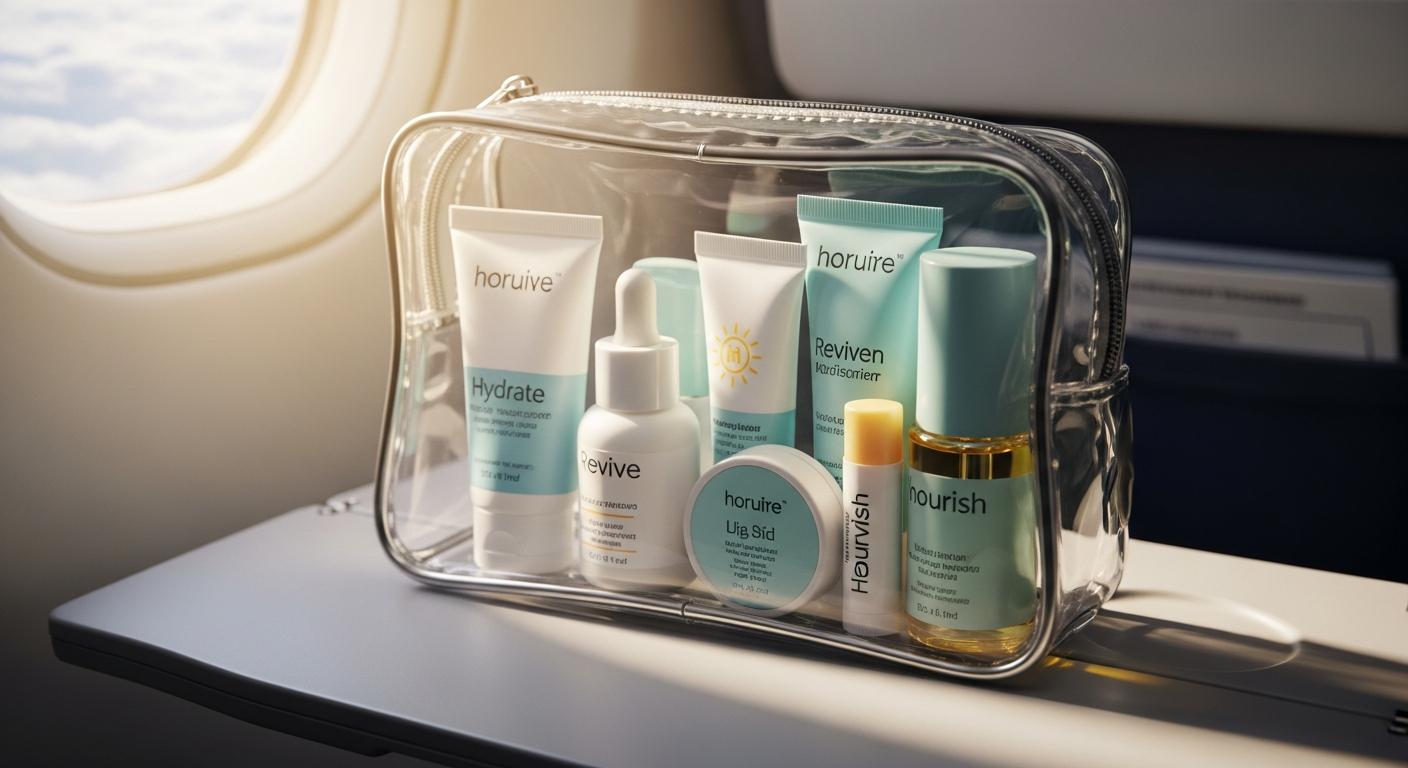Travel-friendly routines to maintain hydration and reduce dehydration during flights
Low cabin humidity and recycled air can strip moisture from skin and hair during flights. Simple, travel-friendly routines that focus on moisturizing, ingredient-smart choices, and compact tools can preserve hydration and reduce dehydration without adding luggage bulk.

Air travel often exposes skin and hair to low humidity, temperature shifts, and recycled air that increase moisture loss. A travel-friendly routine prioritizes consistent moisturizing, timed exfoliation before departure, and protective in-flight steps to limit dehydration. Choose compact products that combine humectants and barrier-supporting ingredients like ceramides and antioxidants so you can maintain hydration without a complicated kit. Practical choices for scalp health and color protection also help hair resist breakage and fading while you travel.
This article is for informational purposes only and should not be considered medical advice. Please consult a qualified healthcare professional for personalized guidance and treatment.
How can moisturizing and hydration be layered on flights?
Layering is the most effective strategy: apply a humectant-first product such as a hydrating serum or mist with glycerin or hyaluronic acid to attract moisture, then follow with a cream or balm rich in ceramides to lock it in. For lips and hands, pack small tubes or tins to reapply during long flights. Drinking water supports systemic hydration, but topical moisturizing reduces transepidermal water loss and keeps skin comfortable on descent and after landing. Choose non-greasy, fast-absorbing textures for easy reapplication in a confined cabin.
When should you schedule exfoliation relative to travel?
Avoid aggressive exfoliation immediately before flying. Physical scrubs or strong chemical exfoliants can temporarily weaken the skin barrier, increasing susceptibility to dehydration in low-humidity cabins. Aim to exfoliate 48–72 hours before departure to allow barrier recovery and improved product absorption. On travel days, prefer gentle cleansing and soothing hydration instead of removal. If you rely on regular exfoliation for skin texture or oil control, adjust timing rather than skipping entirely to balance benefits with barrier protection.
Does sunscreen still matter during flights?
Sunscreen remains relevant for window seats and daylight flights since UVA rays can penetrate aircraft windows. Apply a broad-spectrum sunscreen before boarding if you expect sun exposure through a window or if you will be outdoors during transfers. Travel-sized, non-greasy formulas layer well over serums and under barrier creams without disrupting hydration. Keep a compliant travel container in your carry-on if you anticipate daylight exposure after landing to maintain protection while preserving skin moisture.
Which ingredients—ceramides, peptides, antioxidants—help during travel?
Ceramides are key barrier lipids that reduce moisture loss and are especially valuable in travel moisturizers and balms. Peptides can support long-term skin resilience but are not immediate hydrators; include peptide serums in your regular pre- and post-trip routine. Antioxidants such as vitamin C and vitamin E help neutralize free radicals and environmental stressors encountered during travel. A compact kit that combines a humectant-based serum with antioxidant support and a ceramide-rich moisturizer gives both immediate and cumulative protection.
How can you protect hair: scalp health, color protection, porosity?
Protecting hair during flights focuses on maintaining scalp health, preserving color protection, and addressing porosity. Low humidity can increase static and make hair feel brittle; a lightweight leave-in conditioner or hair mist smooths cuticles and reduces friction. Color-treated hair benefits from UV-safe or color-protection formulations to limit fading. Match product weight to hair porosity: low-porosity hair fares better with lighter sprays and leave-ins, while high-porosity hair often needs richer treatments to penetrate and retain moisture. A small travel oil or mask can be used sparingly at layovers.
What quick fixes help with sebum and split ends in flight?
Manage sebum by using blotting papers for the face and a gentle mattifier if desired; avoid overwashing which strips oils and can prompt rebound sebum. For split ends, minimize brushing when hair is dry and use a wide-tooth comb with a bit of leave-in conditioner to detangle gently. Dry shampoo refreshes roots between washes and reduces the need for heat styling, which can worsen split ends. Pack silk accessories or a soft scarf to lower friction and protect fragile ends until you can trim or treat them properly.
Conclusion
Small, well-timed adjustments and ingredient-focused choices make it possible to maintain hydration and reduce dehydration during flights. Prioritize moisturizing layers that combine humectants and ceramide-rich barriers, time exfoliation to protect the skin barrier, and include simple hair steps that support scalp health, color protection, and porosity-specific needs. Compact, multipurpose products and a few quick fixes for sebum and split ends keep routines travel-friendly while helping skin and hair feel more comfortable during and after air travel.





